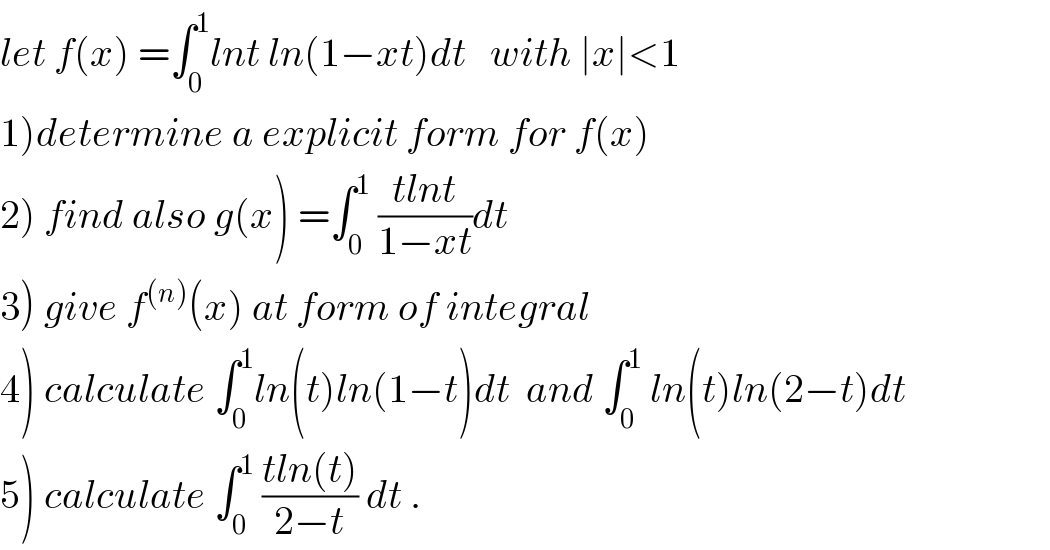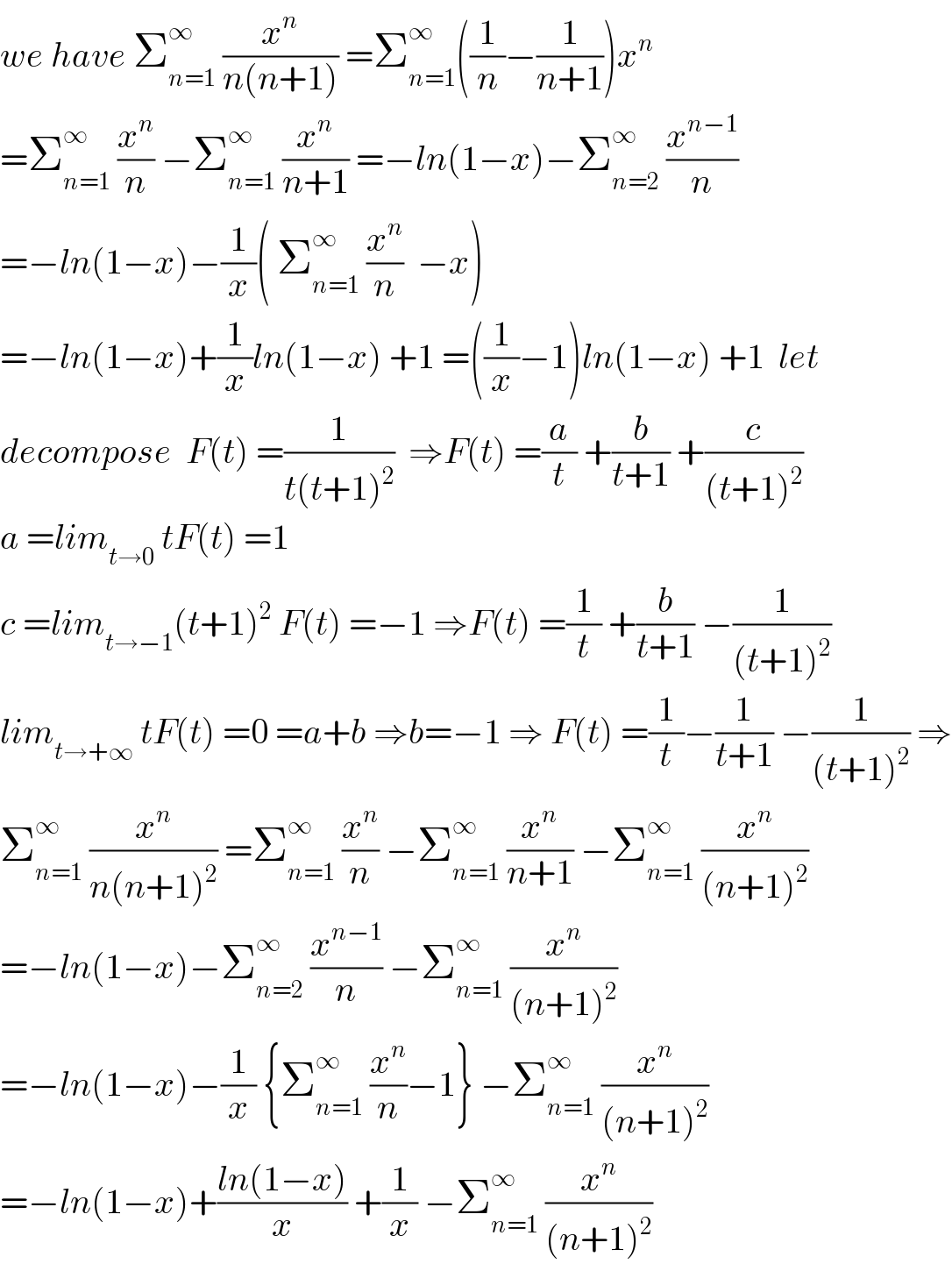
Question and Answers Forum
Question Number 64677 by mathmax by abdo last updated on 20/Jul/19

Commented by mathmax by abdo last updated on 21/Jul/19
![1) f(x) =∫_0 ^1 lntln(1−xt)dt case 1 0<x<1 changement xt =u give f(x) =∫_0 ^x ln((u/x))ln(1−u)(du/x) =(1/x) ∫_0 ^x (lnu−lnx)ln(1−u)du =(1/x) ∫_0 ^x ln(u)ln(1−u)du−((lnx)/x) ∫_0 ^x ln(1−u)du ∫_0 ^x ln(1−u)du =_(1−u =z) ∫_1 ^(1−x) ln(z)(−dz)=∫_(1−x) ^1 ln(z)dz [zlnz−z]_(1−x) ^1 =−1−((1−x)ln(1−x)−(1−x)) =−1−(1−x)ln(1−x) +1−x =−x−(1−x)ln(1−x) also we have ln^′ (1−u) =((−1)/(1−u)) =−Σ_(n=0) ^∞ u^n ⇒ ln(1−u) =−Σ_(n=0) ^∞ (u^(n+1) /(n+1)) +c (c=0) =−Σ_(n=1) ^∞ (u^n /n) ⇒ ∫_0 ^x ln(u)ln(1−u)du =−∫_0 ^x ln(u)Σ_(n=1) ^∞ (u^n /n) du =−Σ_(n=1) ^∞ (1/n) ∫_0 ^x u^n lnu du by parts f^′ =u^n and g =lnu ⇒ w_n =∫_0 ^x u^n ln(u)du =[(1/(n+1))u^(n+1) lnu]_0 ^x −∫_0 ^x (u^(n+1) /(n+1)) (du/u) =((lnx)/(n+1))x^(n+1) −(1/(n+1)) ∫_0 ^x u^n du =((lnx)/(n+1))x^(n+1) −(1/(n+1))[(u^(n+1) /(n+1))]_0 ^x =((lnx)/(n+1))x^(n+1) −(x^(n+1) /((n+1)^2 )) ⇒ ∫_0 ^x ln(u)ln(1−u)du =−Σ_(n=1) ^∞ (1/n){((lnx)/(n+1))x^(n+1) −(x^(n+1) /((n+1)^2 ))} =−lnx Σ_(n=1) ^∞ (x^(n+1) /(n(n+1))) +Σ_(n=1) ^∞ (x^(n+1) /(n(n+1)^2 )) ⇒ f(x) =−lnx Σ_(n=1) ^∞ (x^n /(n(n+1))) +Σ_(n=1) ^∞ (x^n /(n(n+1)^2 )) −((lnx)/x)(−x−(1−x)ln(1−x)) f(x) =−lnxΣ_(n=1) ^∞ (x^n /(n(n+1))) +Σ_(n=1) ^∞ (x^n /(n(n+1)^2 )) +lnx( 1+(1−x)ln(1−x)).](Q64814.png)
Commented by mathmax by abdo last updated on 21/Jul/19

Commented by mathmax by abdo last updated on 21/Jul/19

Commented by mathmax by abdo last updated on 22/Jul/19

